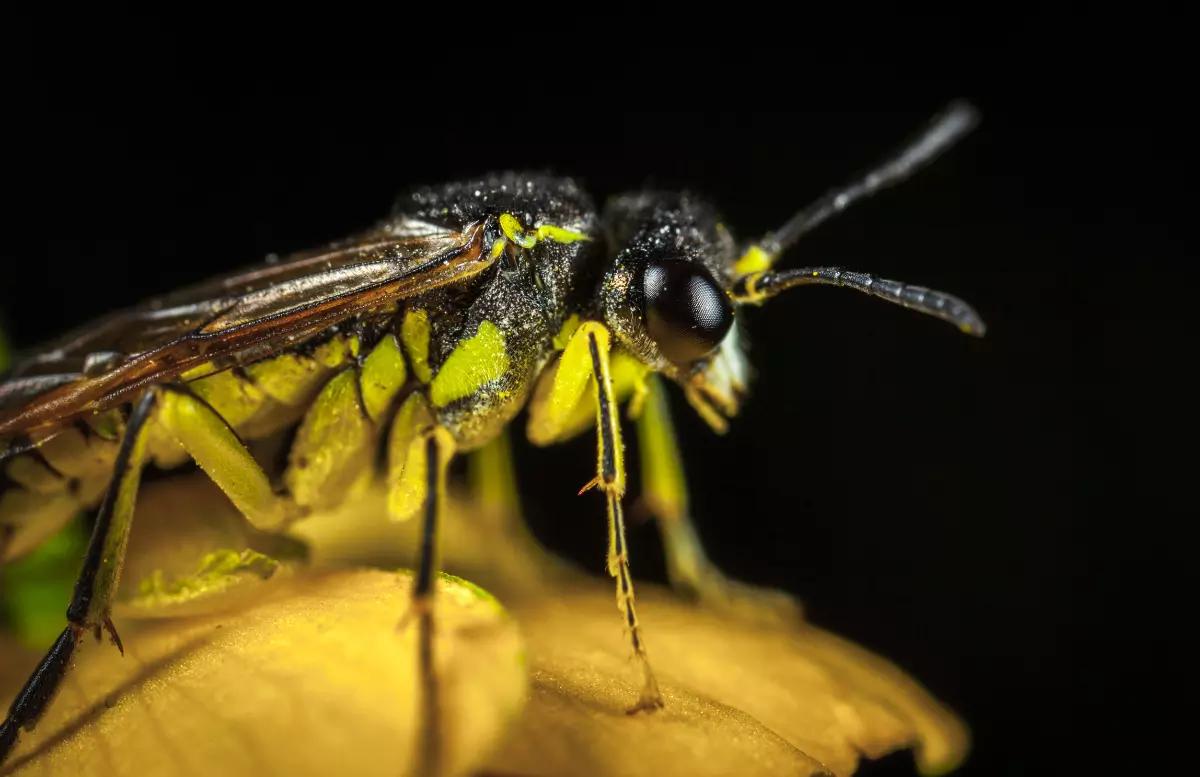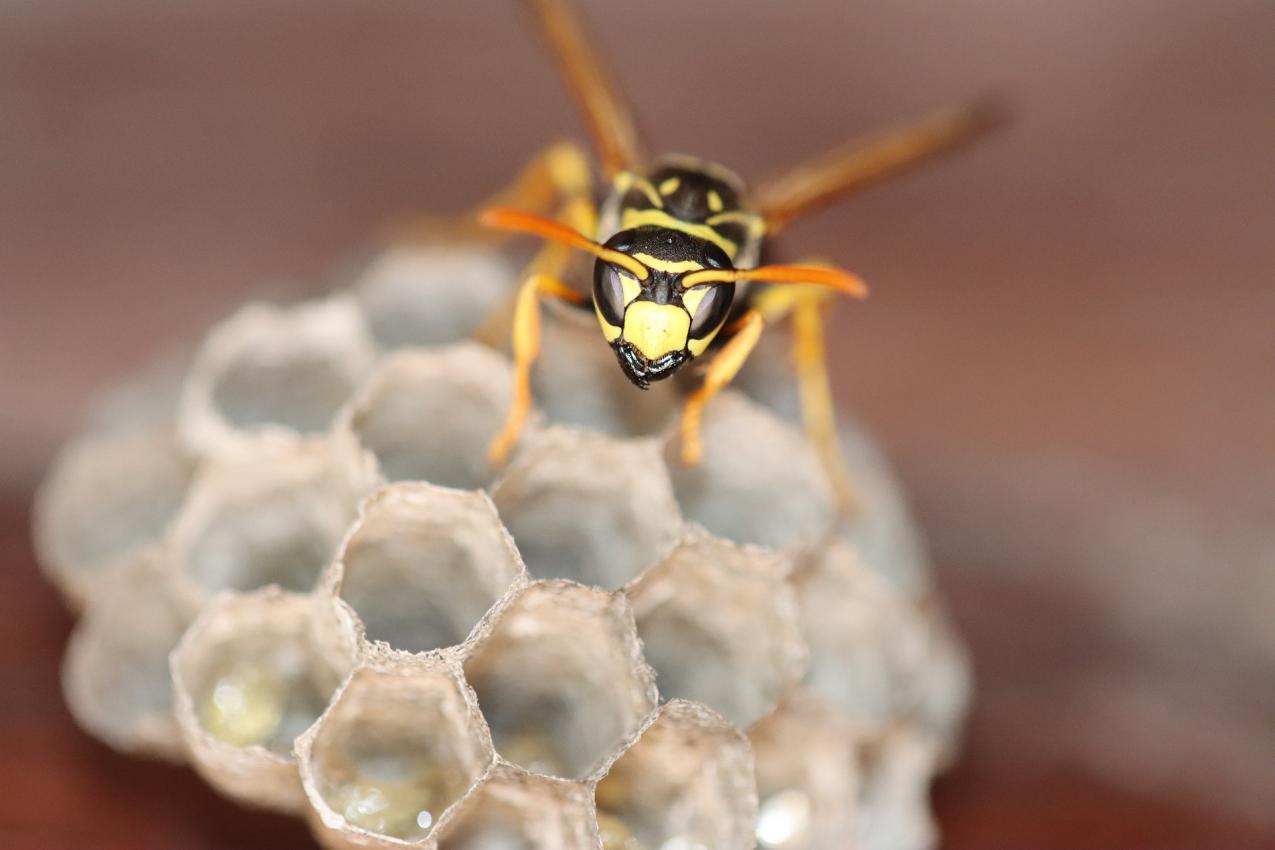Where Are Wasp Nests Usually Found?
Like many animals, wasps build a shelter to protect themselves and their young from the elements. You never see wasp nests on the ground in the middle of the field because it would get flooded from the rain, and it would be vulnerable to predators looking for a quick snack. So wasps nests are typically found anywhere that is sheltered from the rain and a little out of the way.
Some examples of common places wasps like to build their nests are cavities in your walls, lofts, underneath decking or wooden overhangs, sheds and secluded spots in your garden covered by canopy or bushes.
You can find the exact location of a wasp nest by simply watching the wasps and paying attention to their flight paths. If there is an area with an unusually high concentration of wasps, that is likely to be the location of their nest or at least close to it.
It's worth it to remember that different wasp species prefer to build their wasp nests in different places.
Best Way To Get Rid Of A Wasp Nest
01
Wear Protective Clothing
When getting rid of wasp nests, one of the most important things is to wear adequate protective equipment. Wasp stings are spectacularly painful, and make no mistake, if you approach a wasp nest with any open skin showing, you will get stung, likely more than once. Not only is preventing this important to avoid pain, but it could be potentially dangerous if you are allergic to wasp stings or if the wasps sting a sensitive area of your body, like your eyes.
So face protection and thick clothing is necessary, along with a good pair of gloves. We would recommend wearing a wasp veil as it is specifically designed to keep your entire head and face protected while also not hindering your vision.
02
Approach Slowly
Wasps are sensitive to sudden, quick movement, and it triggers an aggressive response from them as they think it is a predator. Not only that but moving quickly makes more noise and causes vibrations that can alert more wasps to your presence near the nest, which may cause more of them to attack you. Therefore when approaching and attempting to remove the nest, it is best to do so carefully with measured steps. It is even better to do this at either dusk or dawn as these are the times where most wasps are tired and asleep or just waking up.

03
Spray Or Powder
If you are removing the wasp nest yourself, you are likely going to be using one of the many varieties of wasp killer sprays or insecticidal dust.
Sprays are good when the wasp nest is easy to hit from a distance, and powders are highly effective when applied either directly to the nest entrance or to any area with a high amount of wasp traffic.
The application of wasp killing spray is fairly straightforward. Stand a good distance away from the nest and spray the nest until the whole wasp nest is covered, be liberal with it. Powder is effective because wasps that touch it don't die immediately and will actually carry it back inside the nest, where it will kill more of them.
04
Re-apply
It's possible that applying your wasp killing spray or powder to the nest hasn't killed all of them. That's why after the first application, we advise that you leave and wait for a few hours before returning to repeat the process. You can keep doing this until you don't see any more wasps in the area.

How NOT To Remove A Wasp Nest
While getting rid of a wasp nest isn't something we would advise you to do on your own. If you need to get rid of a wasp nest, call a professional. That being said, there are some common DIY solutions that you should absolutely avoid doing under any circumstances. Not only will these methods prove to be ineffective at dealing with a wasp nest problem, but they will actively make the situation worse.
Burning A Wasp Nest
Watching wasp nests go up in flames may be cathartic, and yes, it will get rid of the wasp nest itself, but all it will achieve is the deaths of a couple of wasps and not much else. Burning a wasp nest also comes with the added risk of potentially causing fire damage to your property or yourself and, in general, is not worth the risk.
With the nest destroyed, the remaining wasps, of which there will be many, will become confused and aggressive. These wasps won't leave the area and instead will be far more likely to sting anyone nearby as they take out their frustration on nearby bystanders.
Water
Flooding a wasps nest and attempting to drown them is almost as bad as burning the nest and is even less effective. While some of the wasps will drown, enough of them will survive to become a problem. Furthermore, the nest itself won't be completely destroyed, but you will have probably killed all of their larvae, and they will not be happy about that.
There is also the risk of property damage if you flood a wasp nest. While there is the obvious risk of water damage, the remains of the nest will become wet and damp and, if not removed properly, could cause more damage than it otherwise would have.
Destroy With A Baseball Bat
Whatever you do, don't hit the wasps nest. Blunt force trauma via baseball bat, tennis racket or any other object is not an effective means of removing a wasp nest, nor is it a safe one. Attempting to hit the wasp nest will only result in an angry swarm of wasps stinging you relentlessly.
If you have ever attempted to swat at a fly, then you know that it is near impossible to hit them half the time and even when you do, it's unlikely to be dead. It is the same with wasps; only they can fight back.
How To Prevent Wasp Nests
It may sound cliché, but it is nonetheless true that the best solution to a problem is to avoid having the problem in the first place. This is the case with wasp nests. DIY wasp nest removal is risky and often ineffective, and hiring a professional pest control service to get rid of wasps costs money. So either way, getting rid of a wasp nest is going to be a hassle, and there is always the possibility that another wasp colony will arrive and set up a new nest, creating even more of a hassle.
Fortunately, there are steps you can take that make it far less likely for wasps to decide that your property would be a good place to make a nest.
Step One
The first step you can take is to block off and seal easy entry points that wasps may use to enter your home. Remember that wasps won't just burrow into your walls or attic to build their nest; they will only use pre-existing spaces and cavities. So by performing regular checks for cracks and holes in the exterior of your home and maintaining them, you can deny them entry.
Step Two
The next step you can take is to make use of commercial fly screens on your doors and windows. These fly screens are just as effective at keeping wasps and bees out of your home as they are at keeping flies out.
Step Three
Finally, if you want to make absolutely sure that wasps know to avoid your property, you can install waps traps in your garden or house. There are a variety of DIY wasp trap methods you could use if you want to keep it simple, and they are quite effective. Alternatively, you could purchase some from the local DIY store, and they will handle most of the wasps that come near your home.
Are you experiencing a pest infestation in the Stevenage or surrounding Hertfordshire areas?
If you are worried that your home or the exterior of your home has a bug or pest problem or infestation we can help.

